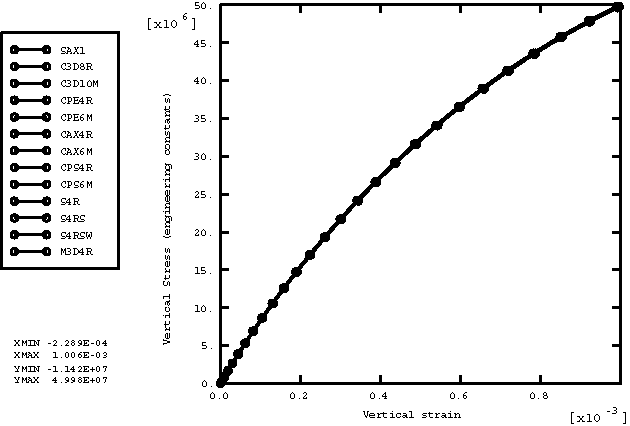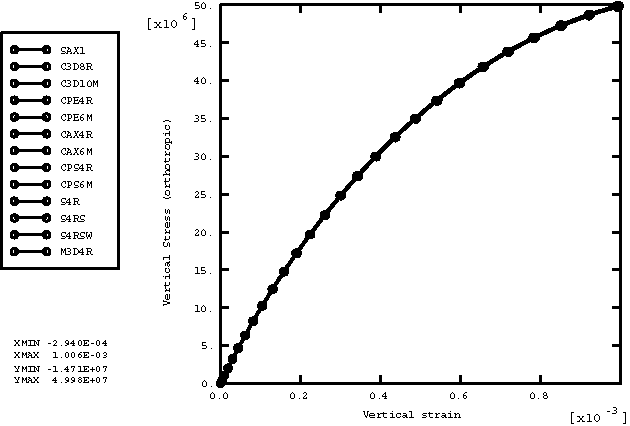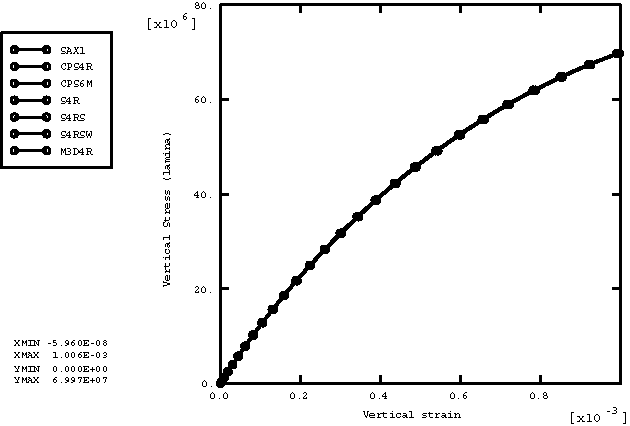Elements tested
T2D2
T3D2
B21
B31
PIPE21
PIPE31
SAX1
S4R
S4RS
S4RSW
C3D8R
C3D10M
CPE4R
CPE6M
CPS4R
CPS6M
CAX4R
CAX6M
M3D4R
ProductsAbaqus/Explicit Elements testedT2D2 T3D2 B21 B31 PIPE21 PIPE31 SAX1 S4R S4RS S4RSW C3D8R C3D10M CPE4R CPE6M CPS4R CPS6M CAX4R CAX6M M3D4R Features testedTemperature-dependent material properties with predefined temperature fields are tested for the following elastic material models: isotropic elasticity, orthotropic elasticity, anisotropic elasticity, and lamina. Problem descriptionThis verification test consists of a set of single element models that include combinations of all the available element types with all the available material models. All the elements are loaded with a tensile load defined by specifying the vertical velocity at the top nodes of each element with the bottom nodes fixed. The velocity is ramped from zero to 0.2. The temperature at all nodes increases from an initial value of 0° to a final value of 100°. The material properties are defined as a linear function of temperature, as shown in Table 1. The density for all the materials is 7850. For every material model, only those element types available for the model are used. The undeformed meshes are shown in Figure 1. Results and discussionFigure 2 shows the plot of vertical stress versus vertical strain for the isotropic elasticity model. The plots of vertical stress versus vertical strain for orthotropic elasticity (ENGINEERING CONSTANTS), orthotropic elasticity (ORTHOTROPIC), anisotropic elasticity, and lamina are shown in Figure 3, Figure 4, Figure 5, and Figure 6, respectively. The vertical stress and vertical strain are and for the truss, beam, and axisymmetric shell elements and and for the remaining elements. The results from pipe elements are consistent with the beams. Input files
Tables
Figures      | |||||||||||||||||||||||||||||||||||||||||||||||||||||||||||||||||||||||||||||||||||||||||||||||||||||||||||||||||||||||||||||||||||||||||||||||||||||||||||||||||||||||||||||||||||||||||||||||||||||||